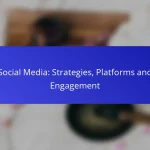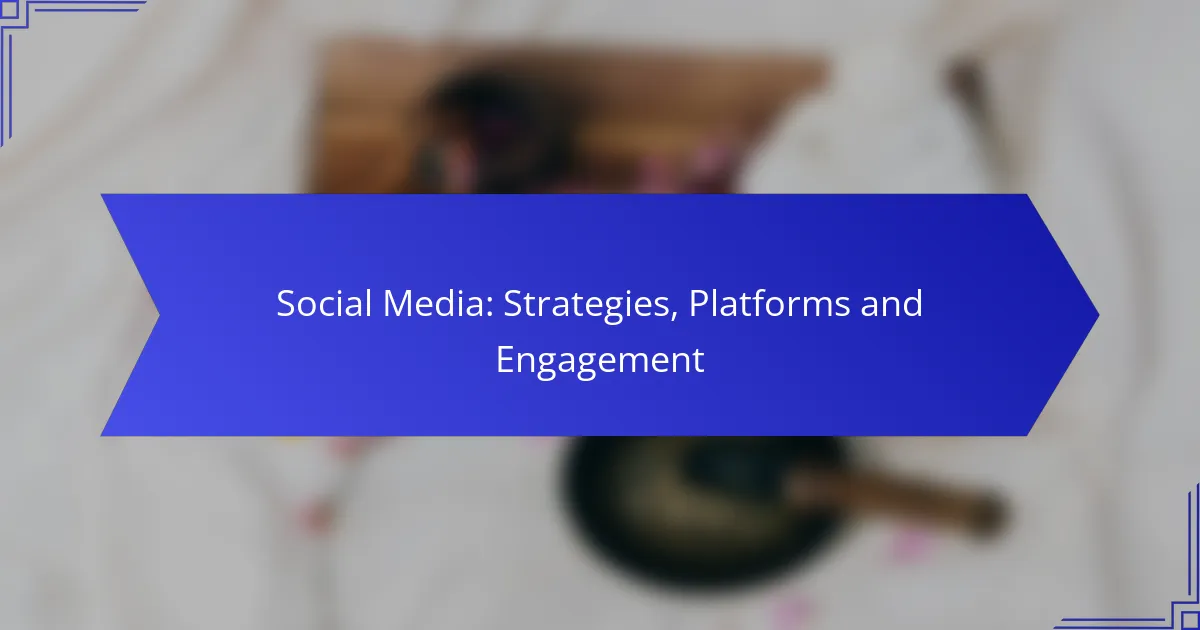Local media plays a crucial role in enhancing e-commerce by fostering partnerships that elevate brand visibility and connect businesses with their target audiences. By utilizing various coverage formats, such as print, radio, and social media, e-commerce businesses can effectively engage their communities. Creating compelling content and nurturing relationships with local journalists and influencers further amplifies promotional efforts, driving sales and building trust within the market.
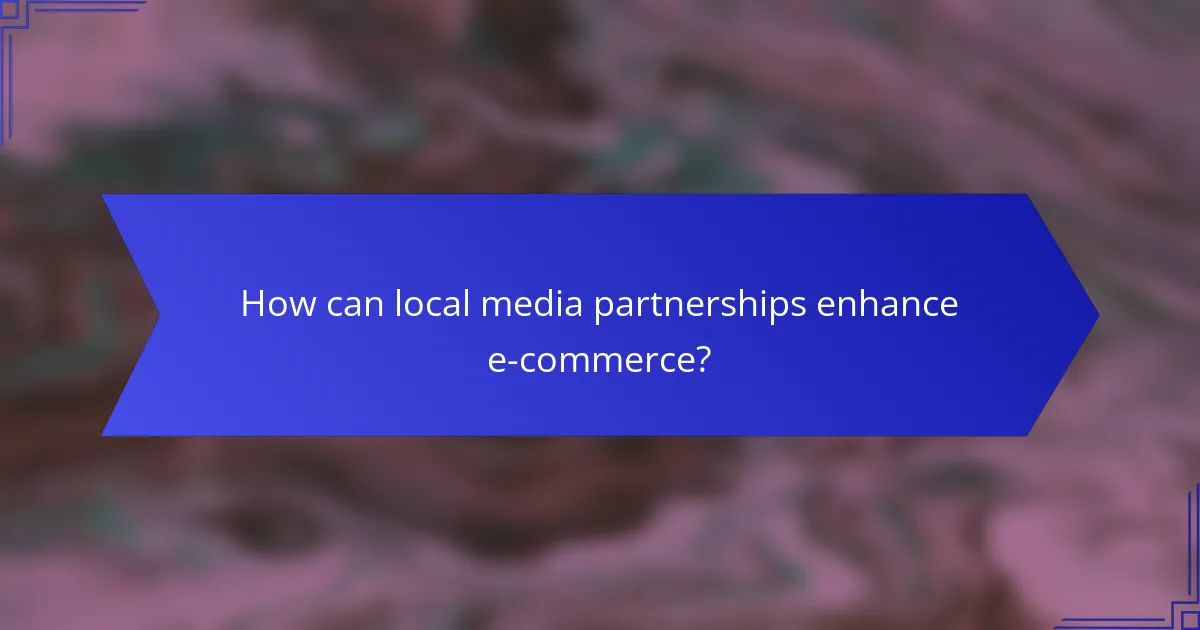
How can local media partnerships enhance e-commerce?
Local media partnerships can significantly boost e-commerce by increasing brand visibility and connecting businesses with their target audiences. By collaborating with local media outlets, e-commerce businesses can leverage established trust and reach within the community.
Increased brand visibility
Partnering with local media enhances brand visibility by placing products and services in front of a larger audience. This exposure can be achieved through features in local newspapers, radio segments, or online articles.
For example, a local bakery could gain attention through a feature story in a community magazine, leading to increased foot traffic and online orders. Regular features can keep the brand top-of-mind for consumers.
Access to targeted audiences
Local media outlets have a deep understanding of their audience demographics, allowing e-commerce businesses to reach specific customer segments effectively. This targeted approach ensures marketing efforts resonate with potential buyers.
For instance, a local outdoor gear shop can partner with a regional magazine focused on outdoor activities, reaching enthusiasts who are more likely to purchase their products. This targeted access can lead to higher conversion rates.
Cost-effective advertising
Advertising through local media can be more cost-effective than national campaigns, especially for small businesses. Local outlets often offer competitive rates and packages tailored to the needs of local advertisers.
For example, a small business might find that a monthly ad in a local newsletter costs significantly less than a national online ad campaign, yet still reaches a relevant audience. This can maximize advertising budgets while maintaining effective outreach.
Collaborative promotions
Local media partnerships can facilitate collaborative promotions, where businesses work together on marketing initiatives. This can include joint events, giveaways, or co-branded content that benefits all parties involved.
A local restaurant and a nearby brewery might collaborate on a special event, promoted through local media, attracting customers to both establishments. Such collaborations can create a sense of community and shared success.
Enhanced credibility
Partnering with reputable local media can enhance a business’s credibility. When a trusted media outlet features a brand, it signals to consumers that the business is reliable and worth considering.
For example, a local fashion retailer featured in a well-respected lifestyle blog can gain instant credibility, encouraging potential customers to trust their products. This trust can lead to increased sales and customer loyalty.
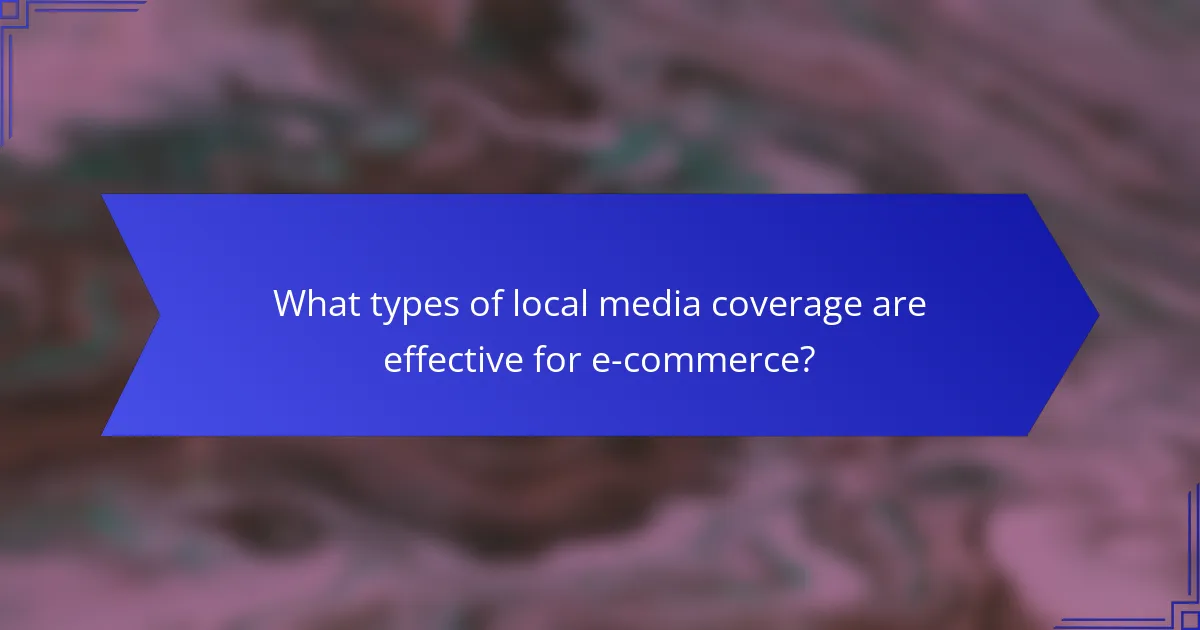
What types of local media coverage are effective for e-commerce?
Effective local media coverage for e-commerce includes various formats that can enhance visibility and drive sales. Strategies such as print media, radio, television, online articles, and social media collaborations each play a unique role in reaching target audiences.
Print media features
Print media features, such as local newspapers and magazines, can effectively showcase e-commerce businesses through articles, advertisements, and product reviews. These publications often have dedicated sections for local businesses, allowing for targeted exposure to community members.
Consider submitting press releases or engaging in partnerships with local publications to feature your products. Highlighting special promotions or events can attract more readers and potential customers.
Local radio advertisements
Local radio advertisements provide a personal touch and can reach a broad audience quickly. Short, catchy spots that highlight your e-commerce offerings can be effective, especially during peak listening times.
To maximize impact, consider sponsoring local events or creating promotions that encourage listeners to visit your website. Engaging with popular local radio personalities can also enhance credibility and reach.
Television segments
Television segments can significantly boost visibility for e-commerce businesses, particularly through local news features or lifestyle shows. These segments often allow for product demonstrations and storytelling, which can resonate well with viewers.
To get featured, pitch unique angles or community involvement stories to local stations. Collaborating with local influencers or experts can also enhance the appeal of your segment.
Online news articles
Online news articles are crucial for e-commerce visibility, as they can be shared widely and reach diverse audiences. Getting featured in local online news outlets can drive traffic to your website and improve search engine rankings.
Focus on creating newsworthy content, such as product launches or community initiatives. Building relationships with local journalists can help secure coverage and ensure your business stays top of mind.
Social media collaborations
Social media collaborations with local influencers or businesses can amplify your e-commerce reach. Partnering with individuals who have a strong local following can introduce your products to new audiences in an authentic way.
Consider running joint promotions or giveaways to engage followers. Regularly interacting with your audience through comments and shares can also foster community and loyalty, driving more traffic to your e-commerce site.
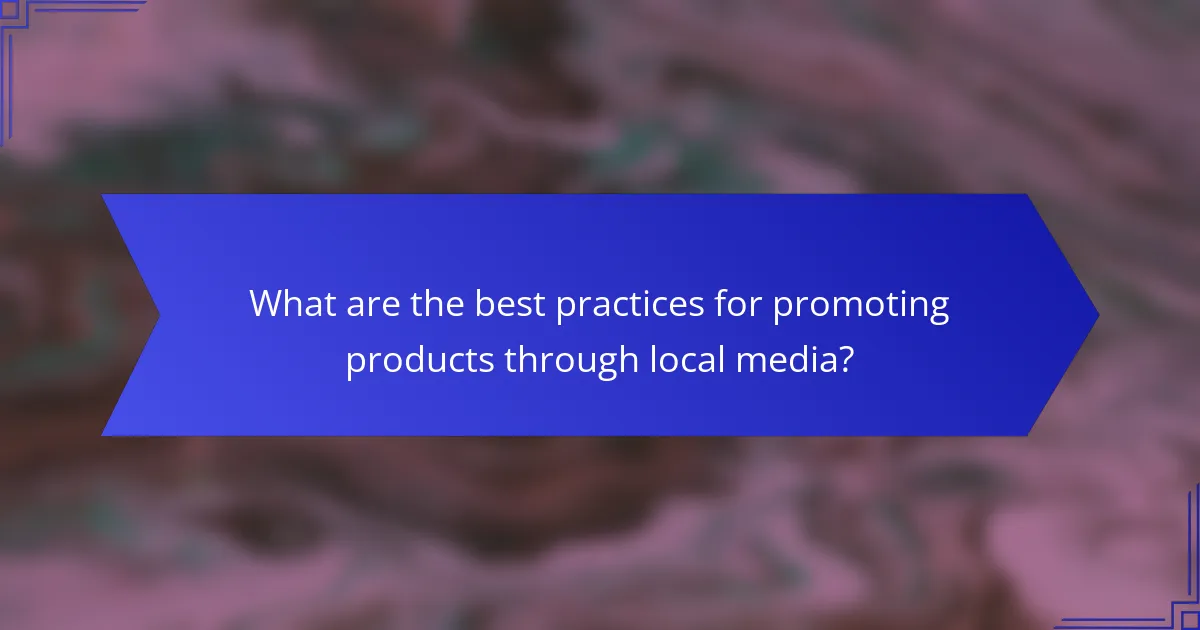
What are the best practices for promoting products through local media?
To effectively promote products through local media, focus on creating compelling content that resonates with the community. Building relationships with local journalists and influencers can enhance visibility and credibility.
Creating engaging press releases
Press releases should be clear, concise, and newsworthy to capture the attention of local media outlets. Start with a strong headline and include essential details such as the who, what, when, where, and why. Aim for a length of 400-600 words to maintain interest without overwhelming the reader.
Incorporate quotes from key stakeholders to add a personal touch and enhance the story’s appeal. Ensure that your press release is distributed through appropriate channels, including local news websites and relevant social media platforms.
Utilizing local influencers
Partnering with local influencers can significantly boost your product’s visibility. Identify influencers whose audience aligns with your target market and who have a genuine connection to your brand. This collaboration can take the form of product reviews, sponsored posts, or social media takeovers.
Consider offering influencers exclusive access to new products or events to create authentic content. This approach not only promotes your product but also builds trust within the community.
Offering exclusive promotions
Exclusive promotions can entice local customers and encourage them to engage with your brand. Consider offering discounts, limited-time offers, or special bundles that are only available through local media channels. This strategy creates a sense of urgency and encourages immediate action.
Promote these offers through press releases, social media, and local advertising to maximize reach. Ensure that the promotions are easy to redeem and clearly communicated to avoid confusion.
Participating in community events
Engaging in community events is a powerful way to promote products locally. Sponsor or participate in fairs, markets, or charity events to increase brand visibility and connect with potential customers. Set up booths or provide samples to create direct interactions with the community.
Use these opportunities to gather feedback and build relationships. Consider collaborating with local organizations to enhance your presence and demonstrate your commitment to the community.

How to measure the effectiveness of local media partnerships?
Measuring the effectiveness of local media partnerships involves assessing their impact on your business goals, such as sales and brand awareness. Key metrics include tracking sales conversions, audience reach, and engagement levels.
Tracking sales conversions
Tracking sales conversions is crucial for evaluating the success of local media partnerships. This process involves monitoring how many sales can be directly attributed to media campaigns, which can be done using unique promo codes or dedicated landing pages.
Consider implementing tools like Google Analytics to track user behavior and conversions from specific media sources. For example, if a local newspaper runs a promotional ad, you can measure the sales generated through that ad by analyzing traffic and conversion rates from the linked website.
Common pitfalls include failing to set clear goals before launching a campaign or neglecting to analyze data post-campaign. To avoid these issues, establish specific conversion targets and regularly review performance metrics to adjust strategies as needed.



